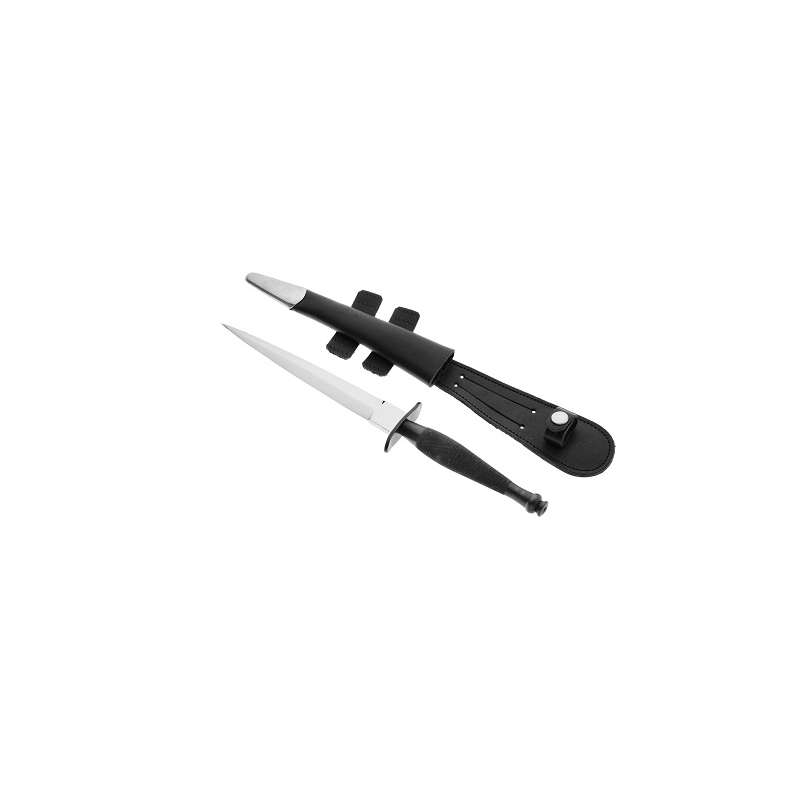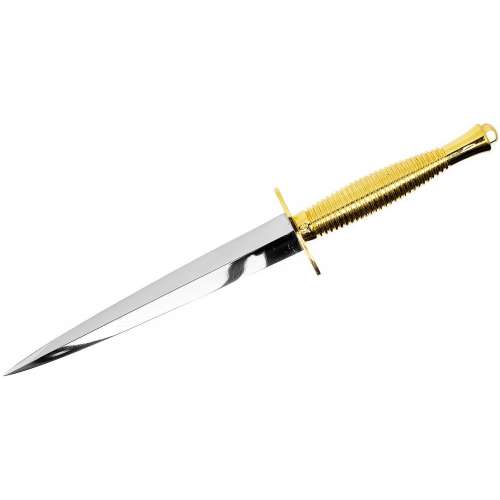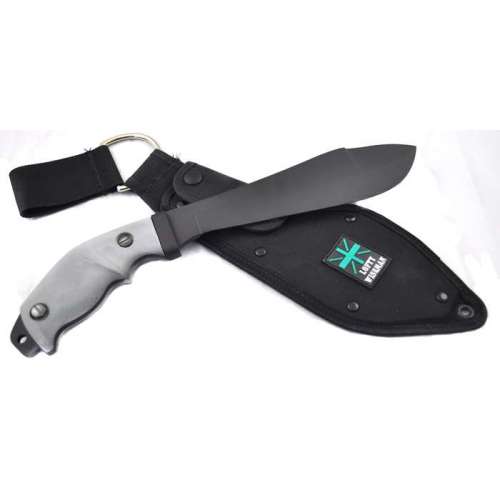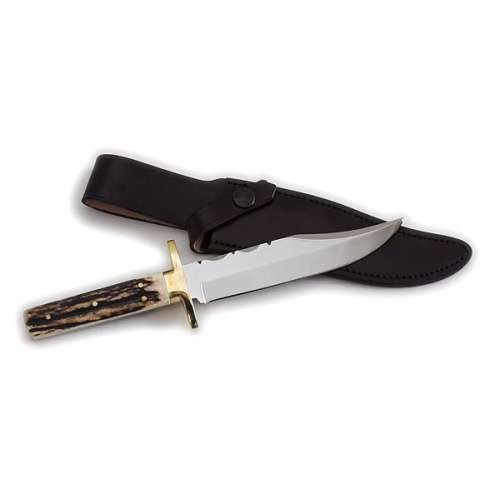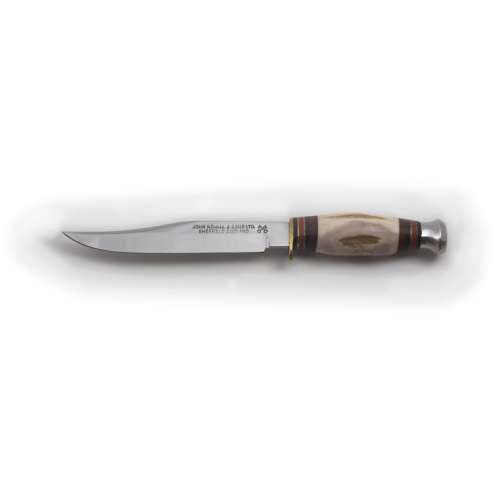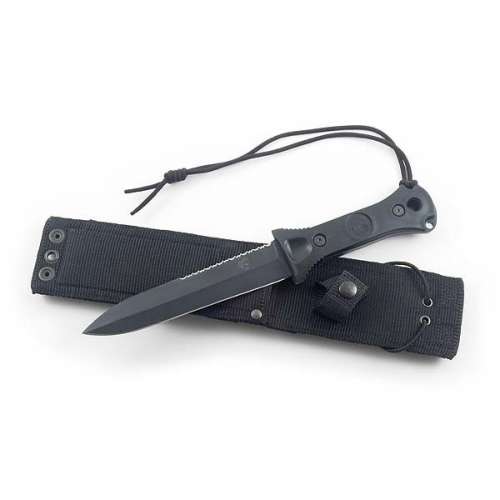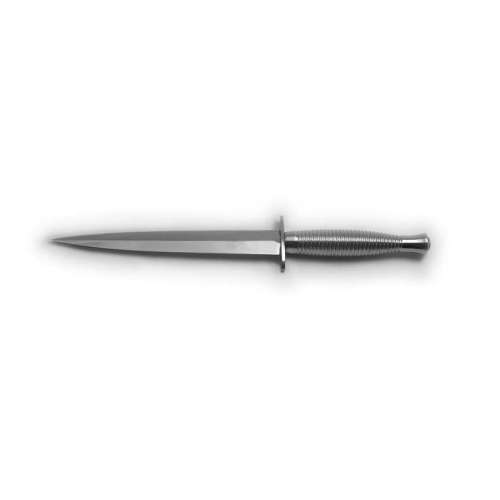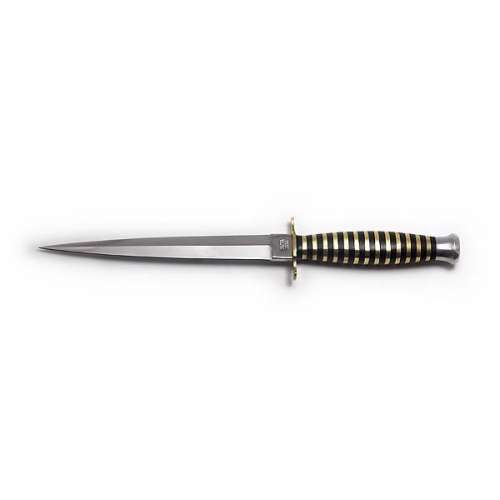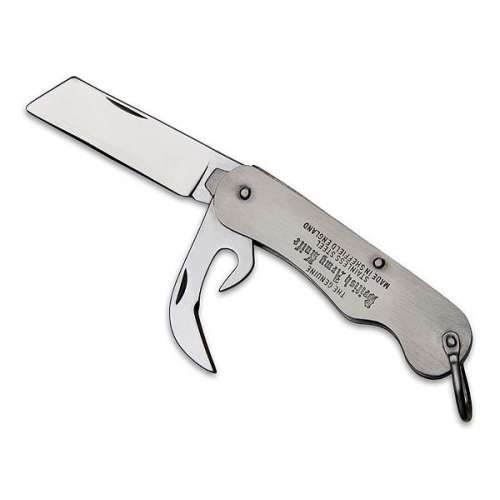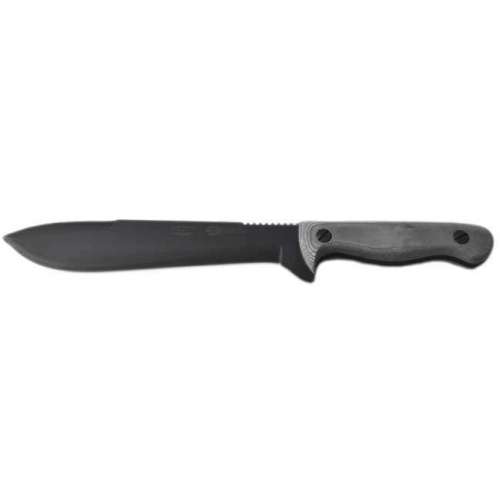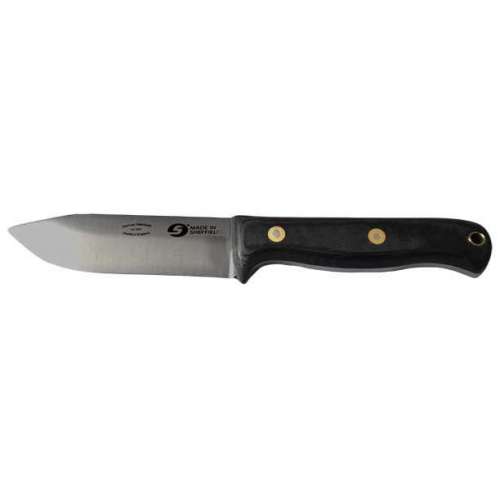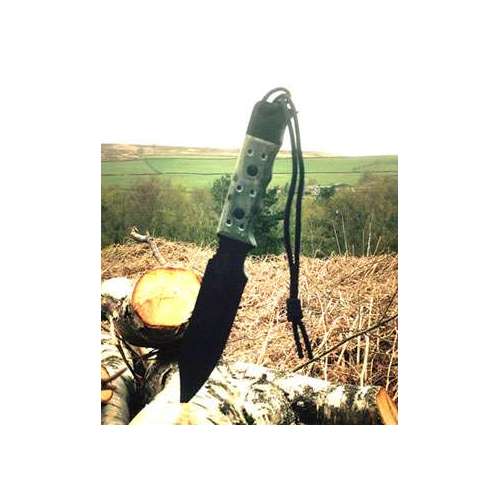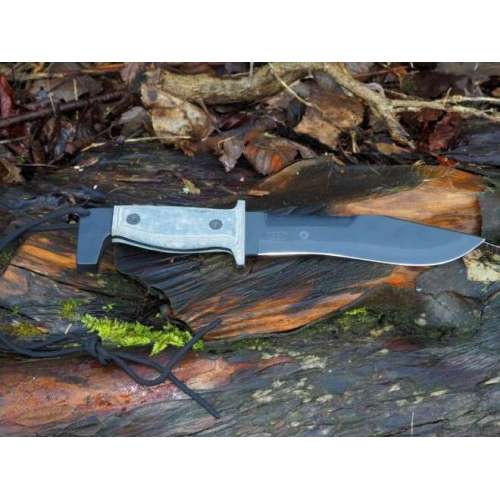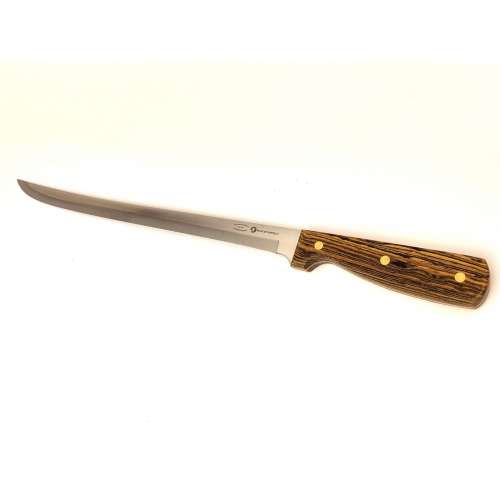No products
Product successfully added to your shopping cart
There are 0 items in your cart. There is 1 item in your cart.
Originally manufactured by Wilkinson Sword Co Ltd of London, the Fairbairn Sykes knife is split into ‘three’ distinct versions or ‘patterns’. As you may have guessed, the first of these patterns is referred to by collectors as the ‘First Pattern’ or the Wilkinson sword Fairbairn Sykes. This pattern is easily distinguishable from other variations due to its distinct etched square ‘tablet’ shaped ricasso and wavy ‘S’ shaped crossguard.
Unlike the other variations, the First Pattern is very consistent in its design, with very few production anomalies or manufacturing differences. Consequently, most First Pattern knives are nearly identical to one another, taking a somewhat ‘standardised pattern’.
The balance of a Fairbairn-Sykes is a crucial part of the design and it takes careful forging and production to ensure that the knife balances exactly as designed. The hilt should fit easily in the hand and the blade should not be so heavy that it tends to drag the hilt from the fingers in a loose grip. At Samuel Staniforth, we offer First Patterns with a range of different handle and blade combinations so that you can find the ideal knife for you.
You may be interested to learn that during WW1, Samuel Staniforth was one of the original companies forging high-quality Fairbairn-Sykes knives for use by the allied forces. These days, our First Pattern knife is manufactured in Sheffield with streamlined precision, ensuring you receive the best quality knife for your collection.
Alternatively, if you’re looking for a different pattern, take a look at our Third Pattern Fairbairn Sykes knife.
Specification
Overall length: 111⁄2" (29cm)
Weight: 9 ounces (260g)
Blade length: 7" (18cm)
Blade thickness: 3⁄16" (5mm)
Blade material: 1075 carbon steel (CS80)
Blade hardness: HRC 51
Sheath: Leather
Lanyard: No
First Pattern FAQs
How Was The First Pattern Fairbairn Sykes Developed?
The Fairbairn Sykes First Pattern was conceived by William E. Fairbairn and Eric A. Sykes, two pioneers of unconventional warfare. On the 4th of November 1940, both Sykes and Fairbairn attended a meeting with the managing director of Wilkinson Sword Co Ltd, John Wilkinson-Latham. Wilkinson’s engineering manager and head of Experimental Workshop, Mr Charles Rose was also in attendance. After this meeting, a design was agreed upon and production of what we now refer to as the ‘First Pattern’ (F-S) began. Production of the First Pattern remained constant well into 1941, until the production of the Second Pattern on 12th August 1941.
Are The First Pattern Knives Still Produced Today?
In recent years, companies such as Wilkinson Sword, H.G. Long and Joseph Rogers have all attempted to reproduce the First Pattern knife. Unfortunately, none of these replicas have matched the quality of those war-time knives.
What Was The First Pattern Fairbairn Sykes Knife Used For?
The First Pattern Fairbairn Sykes knife was not designed to be a hunting knife. It was actually designed for warriors who were hunting men and who were taught the techniques of silent killing. Due to its efficacy, the knife very quickly became a favourite of British commandos.
What Is The Width of The Blade on a First Pattern Knife?
Generally, First Pattern knives range between 6 ½ to 6 ⅞ inches long, one inch wide at the ricasso and between 0.180-0.200 inches thick at the ricasso.
What Are The Different Knife Patterns?
As mentioned already, the Fairbairn Sykes knife is split into three distinct ‘versions’, including:
First Pattern - Produced in 1940 by Wilkinson Sword, the First Pattern is a double-edged dagger blade with a medial ridge. Having been grounded by hand, it is tricky to find two blades with the same shape and size.
Second Pattern - Produced in 1941, the Second Pattern is not usually marked with any name or mark referring to the manufacturer. The finishes on Second Pattern knives come in three possible configurations; dark handles and guards with bright blades or nickel-plated handles and guards with bright blades.
Third Pattern - Finally, we have our Third Pattern knife. Produced in 1942 to support the demand for faster and cheaper production, the Third Pattern features a new cast grip. It is believed to be the design of the Joseph Rodgers firm, of Sheffield. By this time more than 100 different companies made and/or sold the Commando knives.
**Please Note - These replica knives are not intended for combat use.
How Do I Maintain My First Pattern Knife?
Unfortunately, many owners of the First Pattern knife make the mistake of cleaning, polishing, sharpening or disassembling their original knife and in doing so, destroy any historic or monetary value it may have had. At Samuel Staniforth, we stand by the golden rule, ‘less is more’.
Here are some of our top tips for maintaining your First Pattern knife:
Don’t store your knife in its scabbard or sheath. This is because leather holds moisture, which will eventually have a negative effect on the blade.
Never use an abrasive cleaner or polish. However ‘gentle’, this will eventually remove and/or damage the finish.
The only cleaner we recommend is Renaissance Wax. This product was developed by the British Museum and will not harm your knife or scabbard. You can then use a soft toothbrush to get into difficult-to-reach areas.
We recommend wearing cotton gloves to clean your combat knife. This way, you can prevent the natural harmful oils in your skin from leaving an unwanted residue.
Do I Need To Sharpen My First Pattern Knife?
No. There is no need to sharpen your First Pattern Fairbairn Sykes knife. This is because it is a stabbing knife, not a slicing knife and is therefore not made with a razor sharp edge.
Reviews
No customer reviews for the moment.
Customers who bought this product also bought:
15 other products in the same category:


